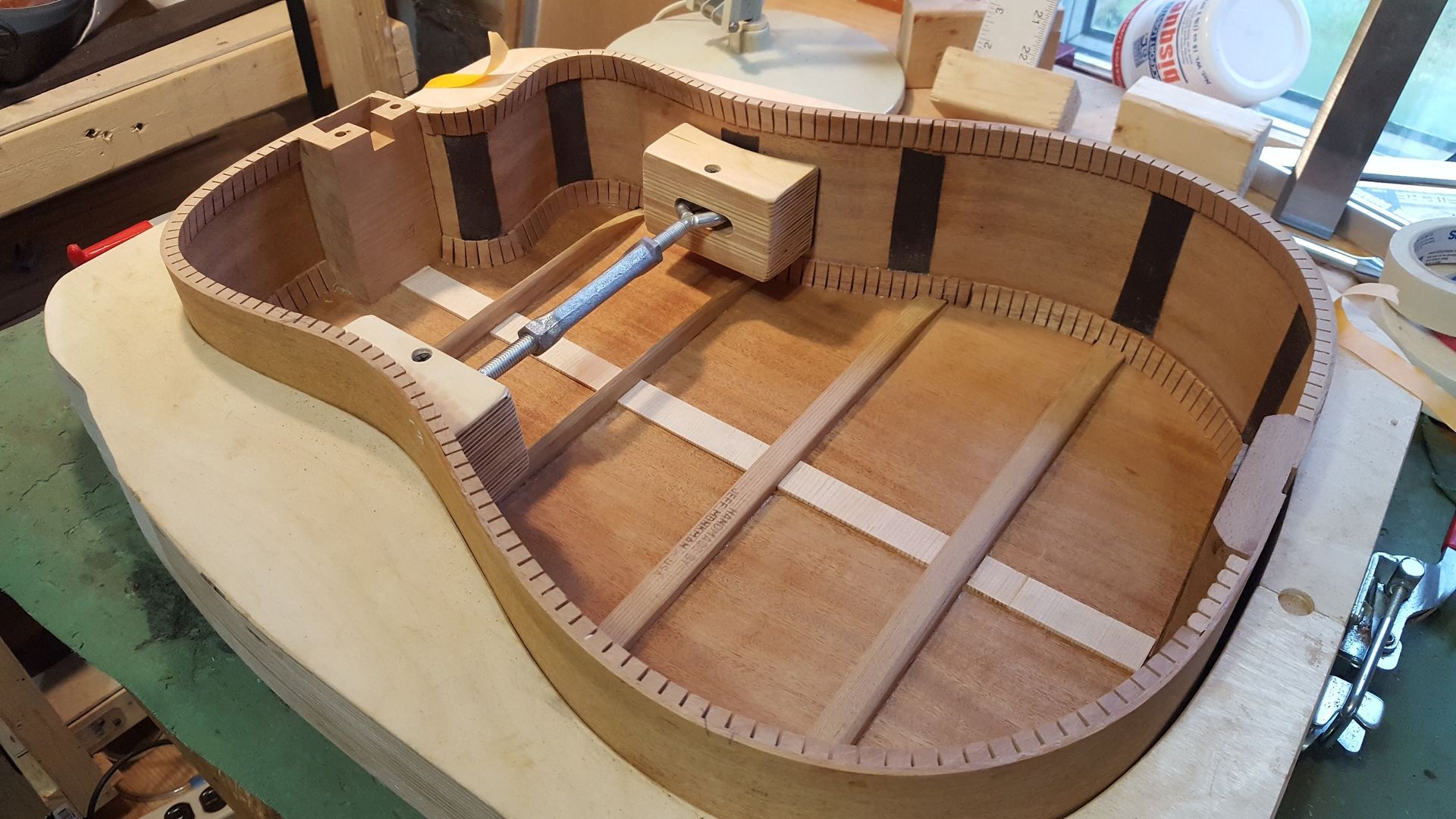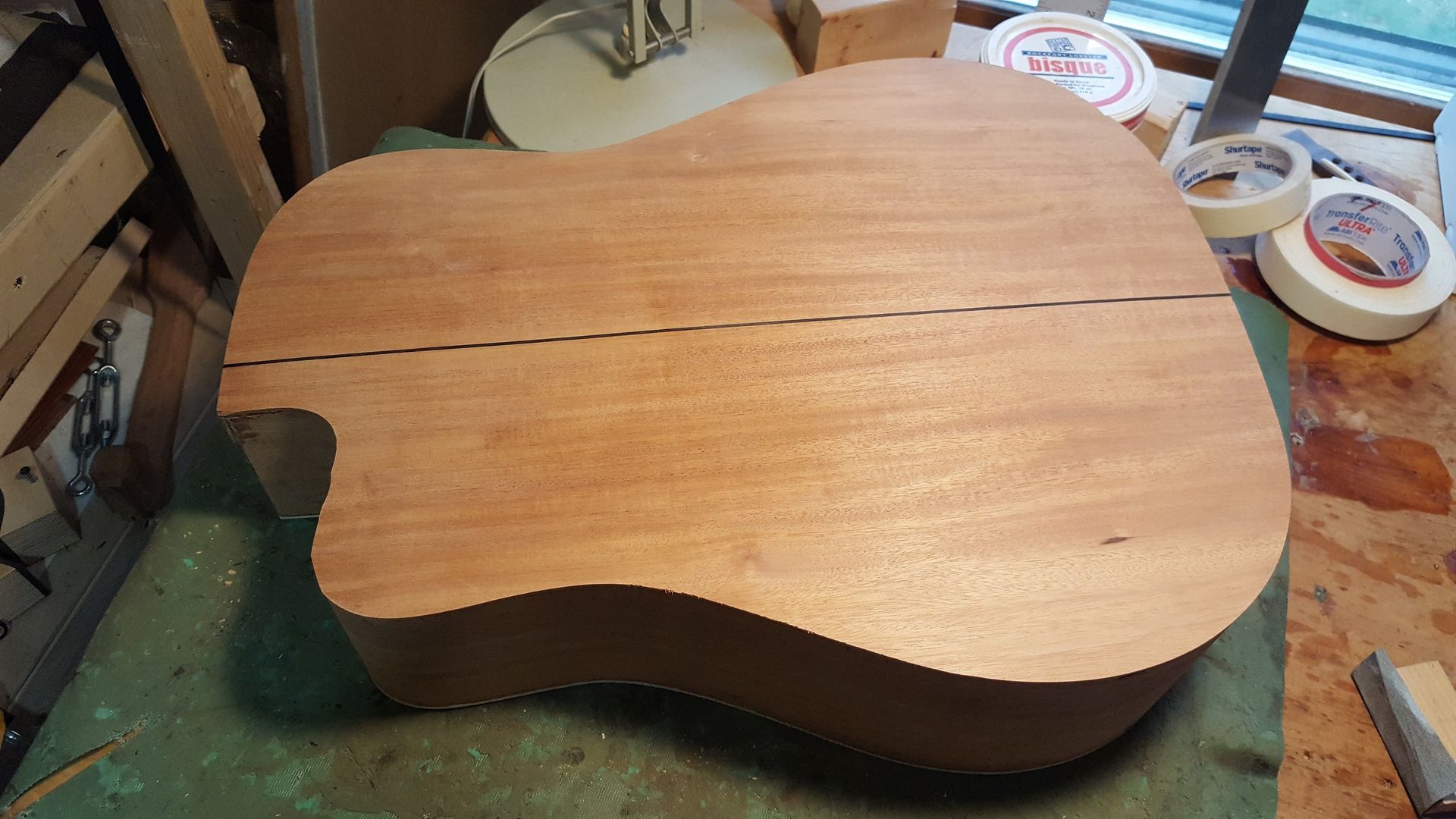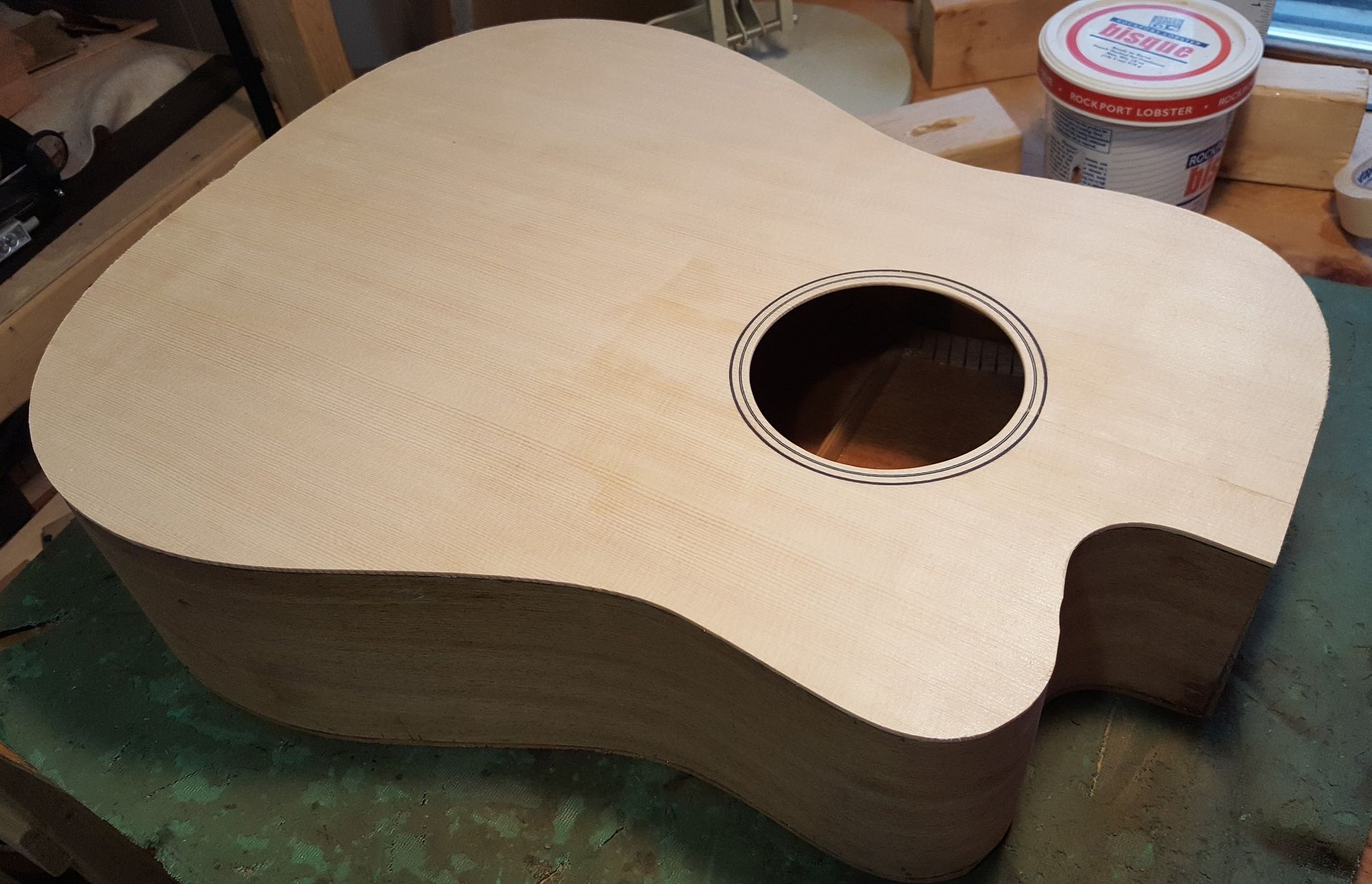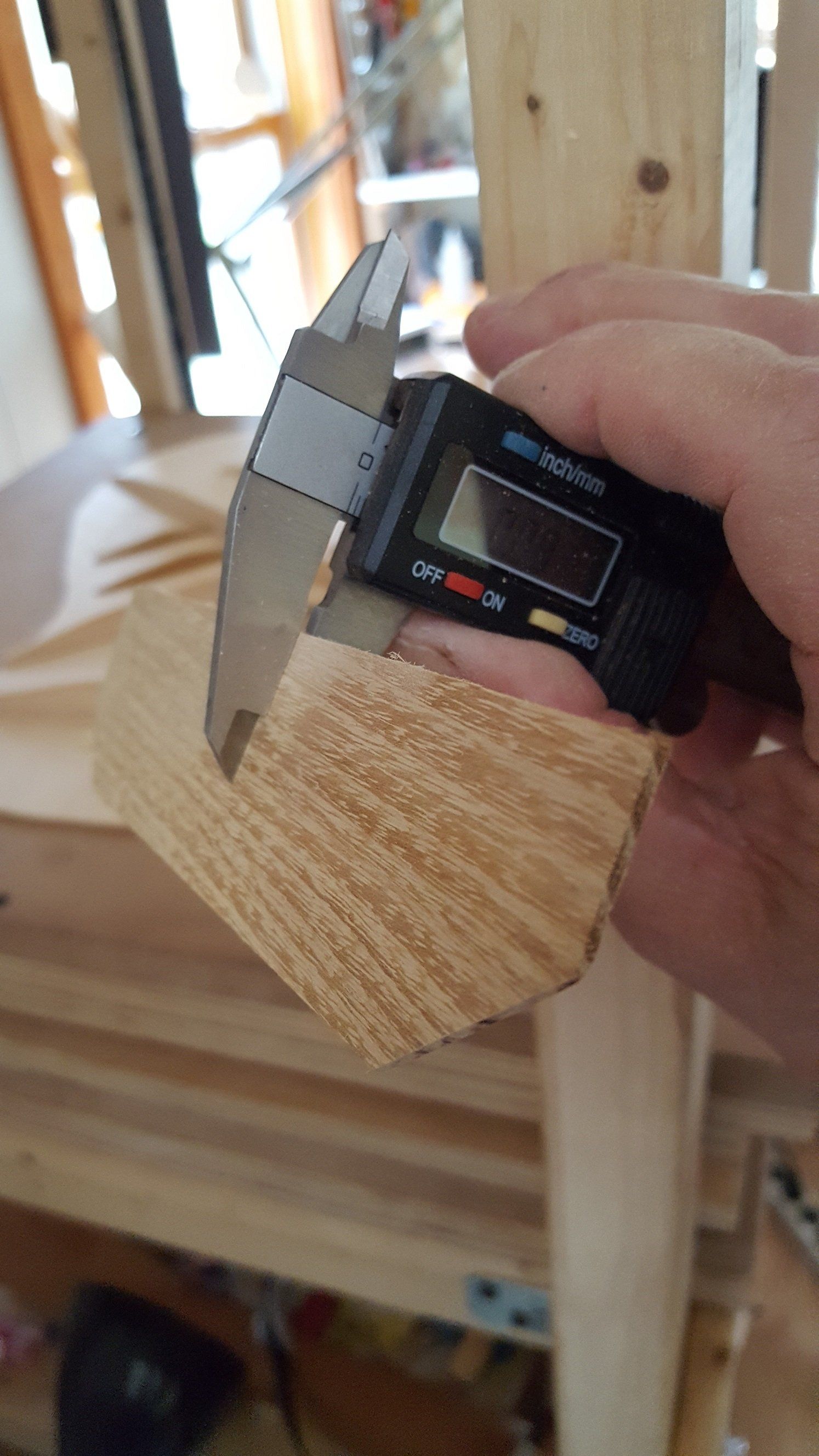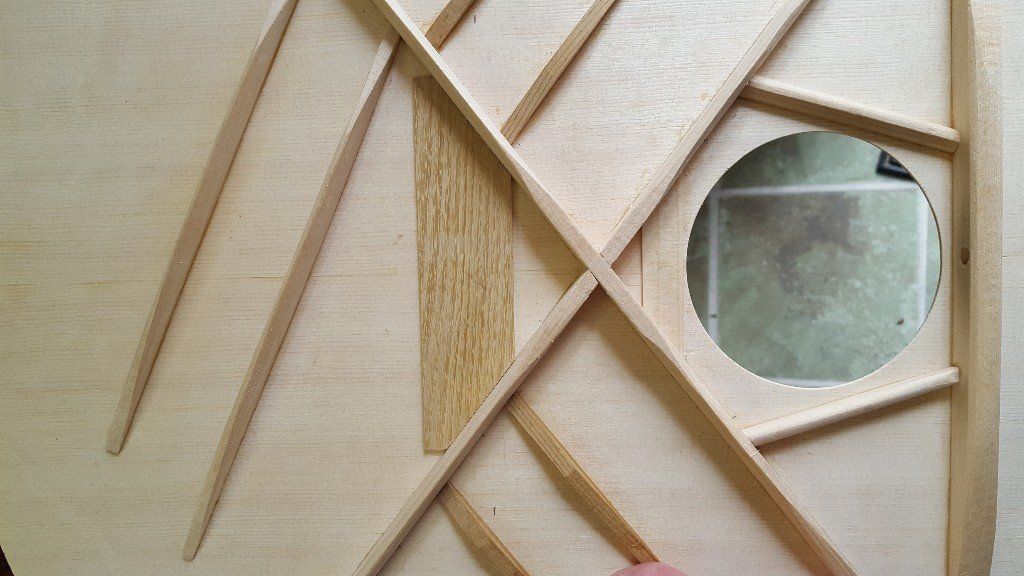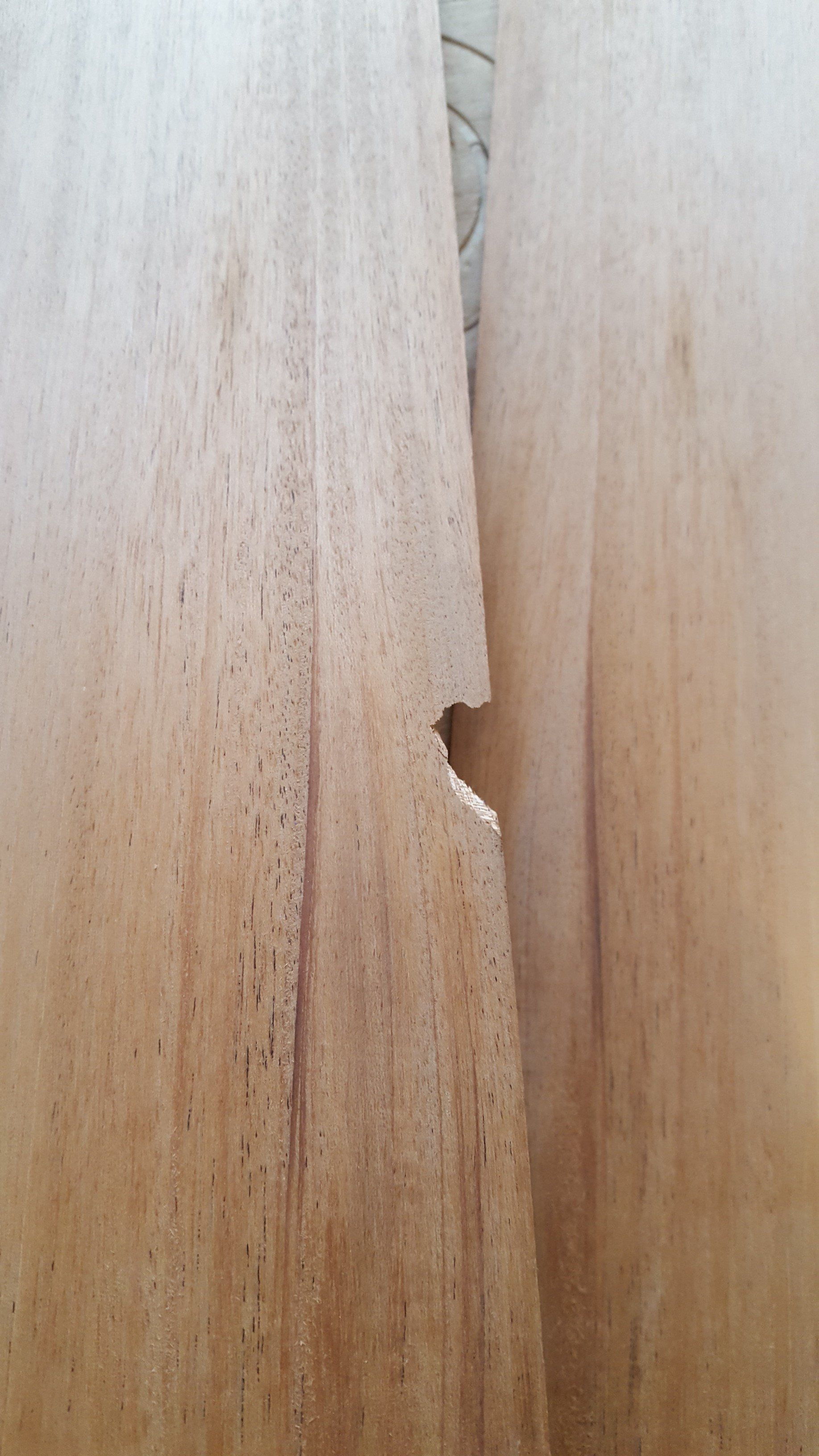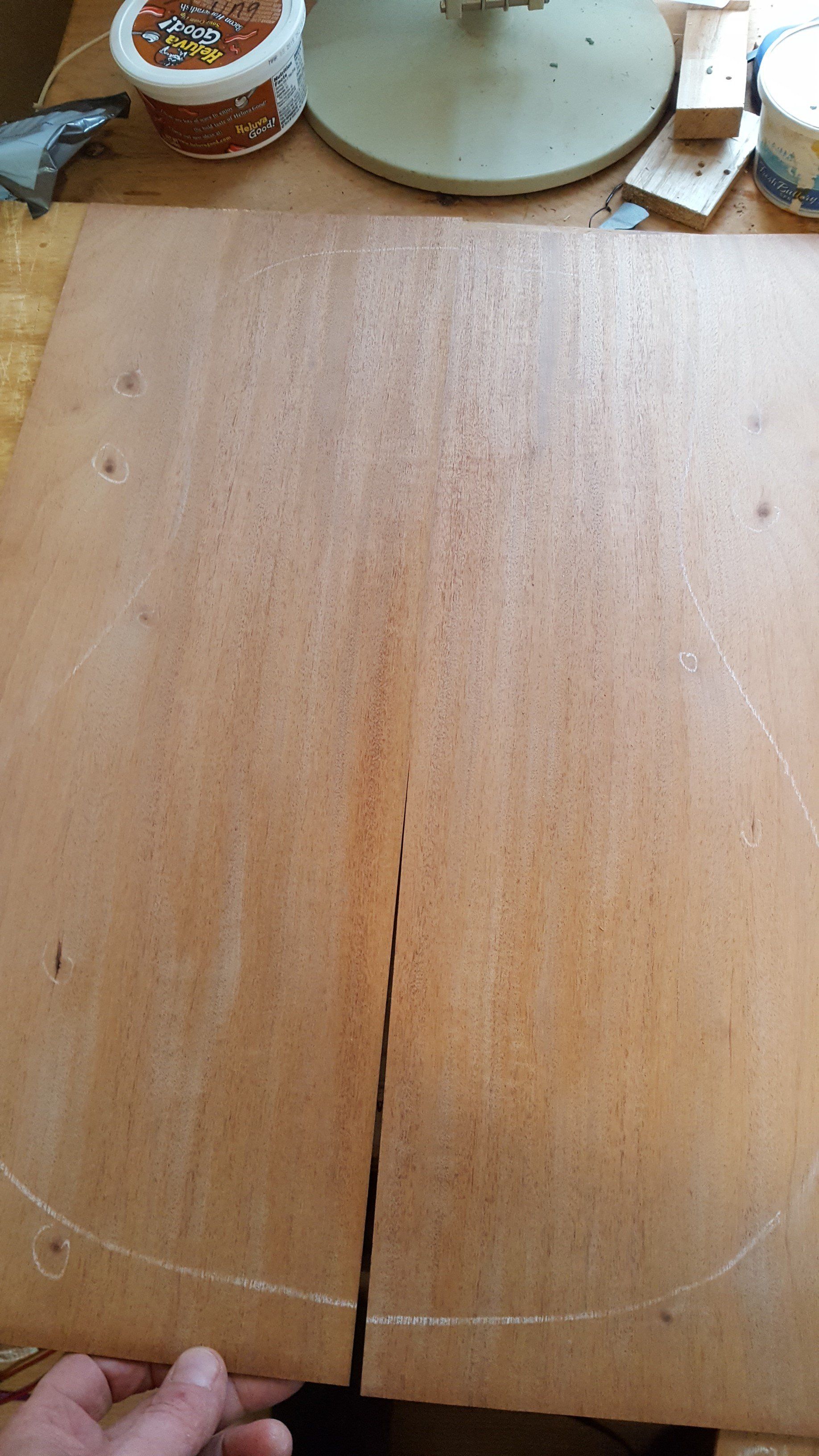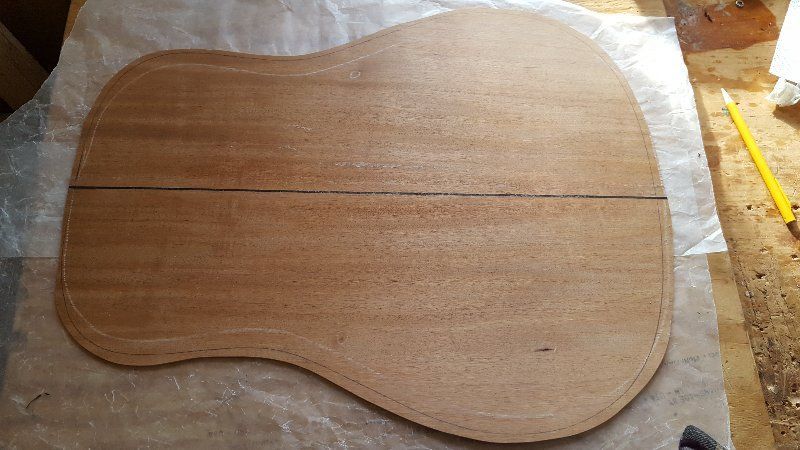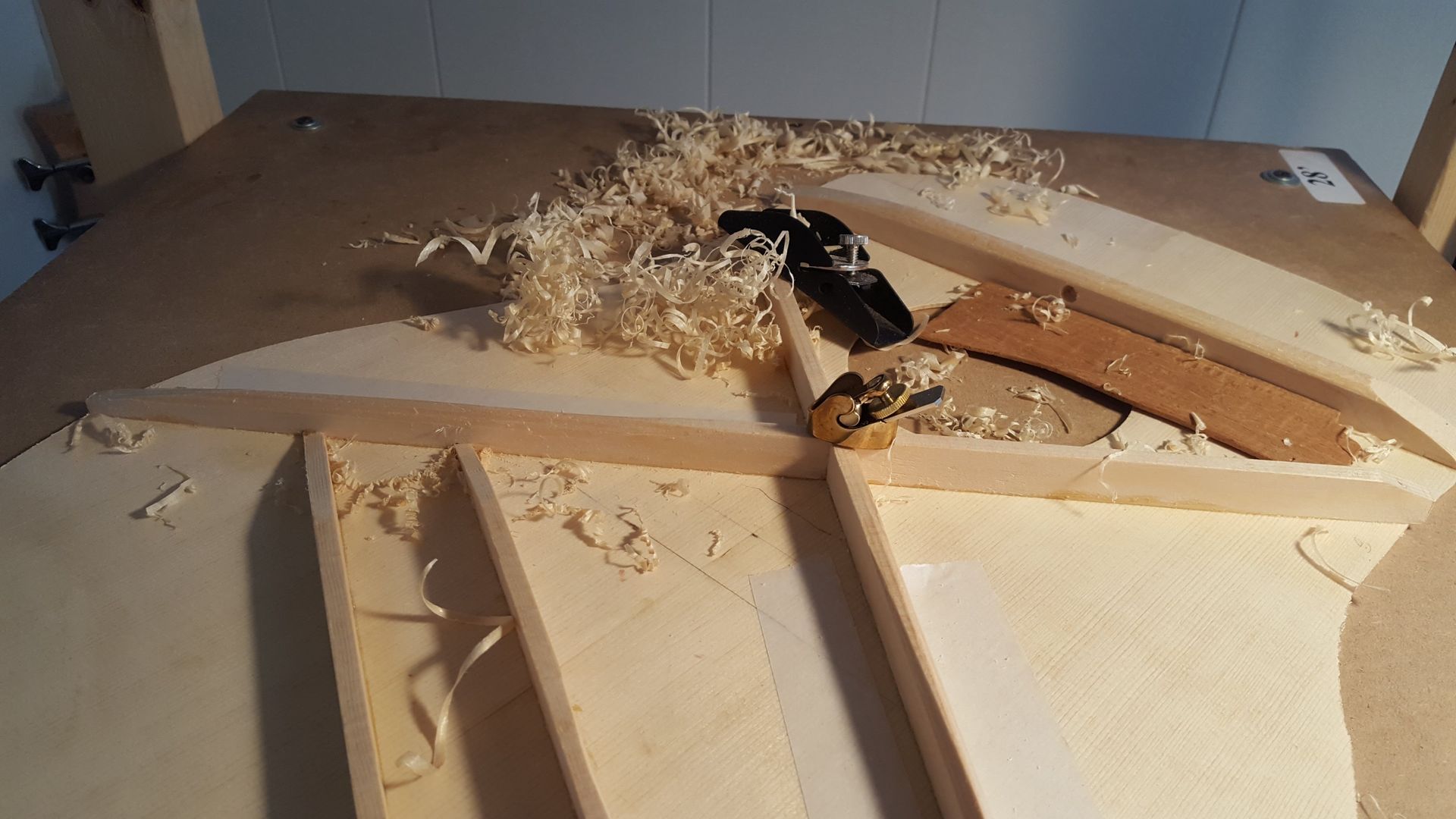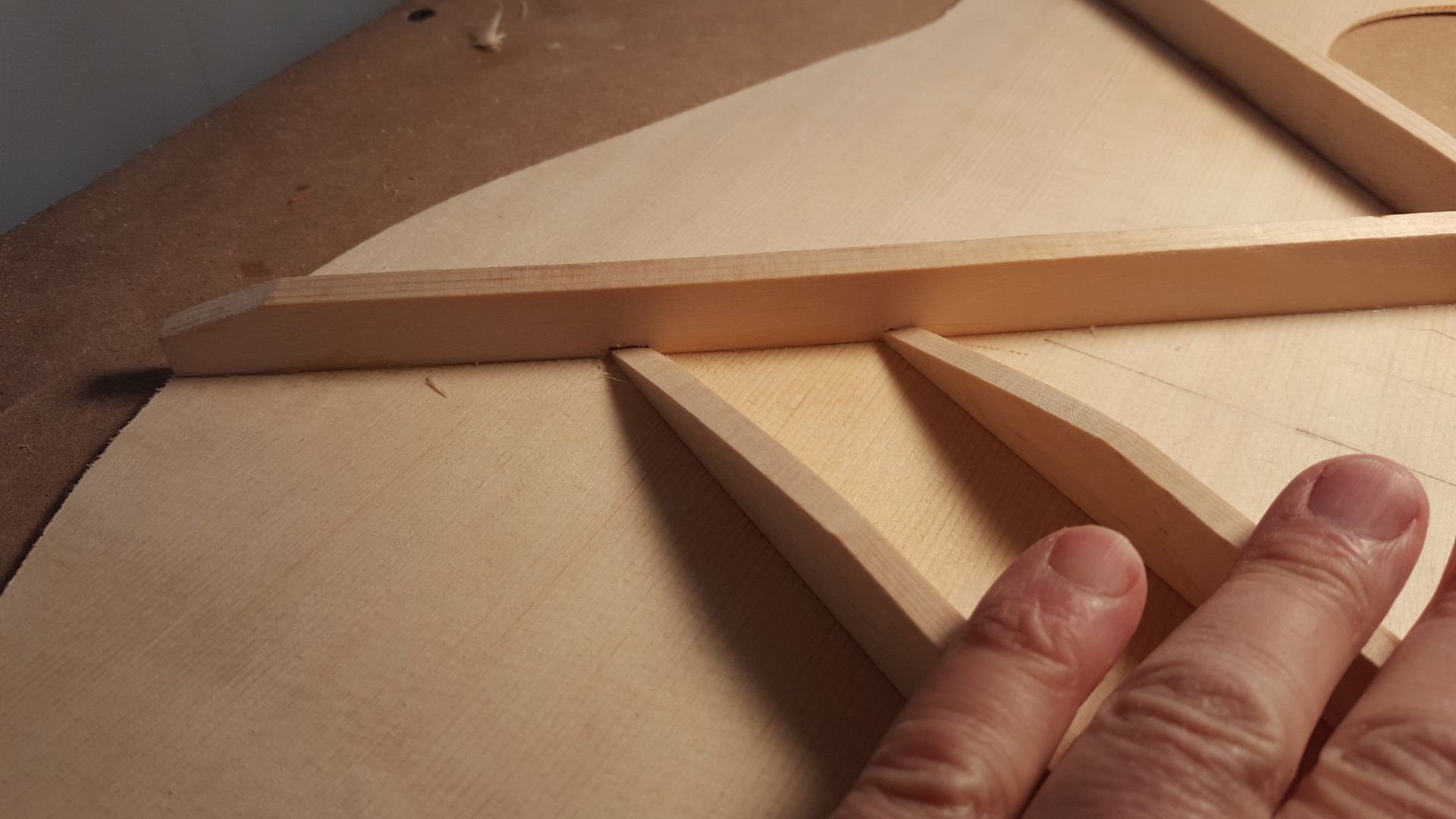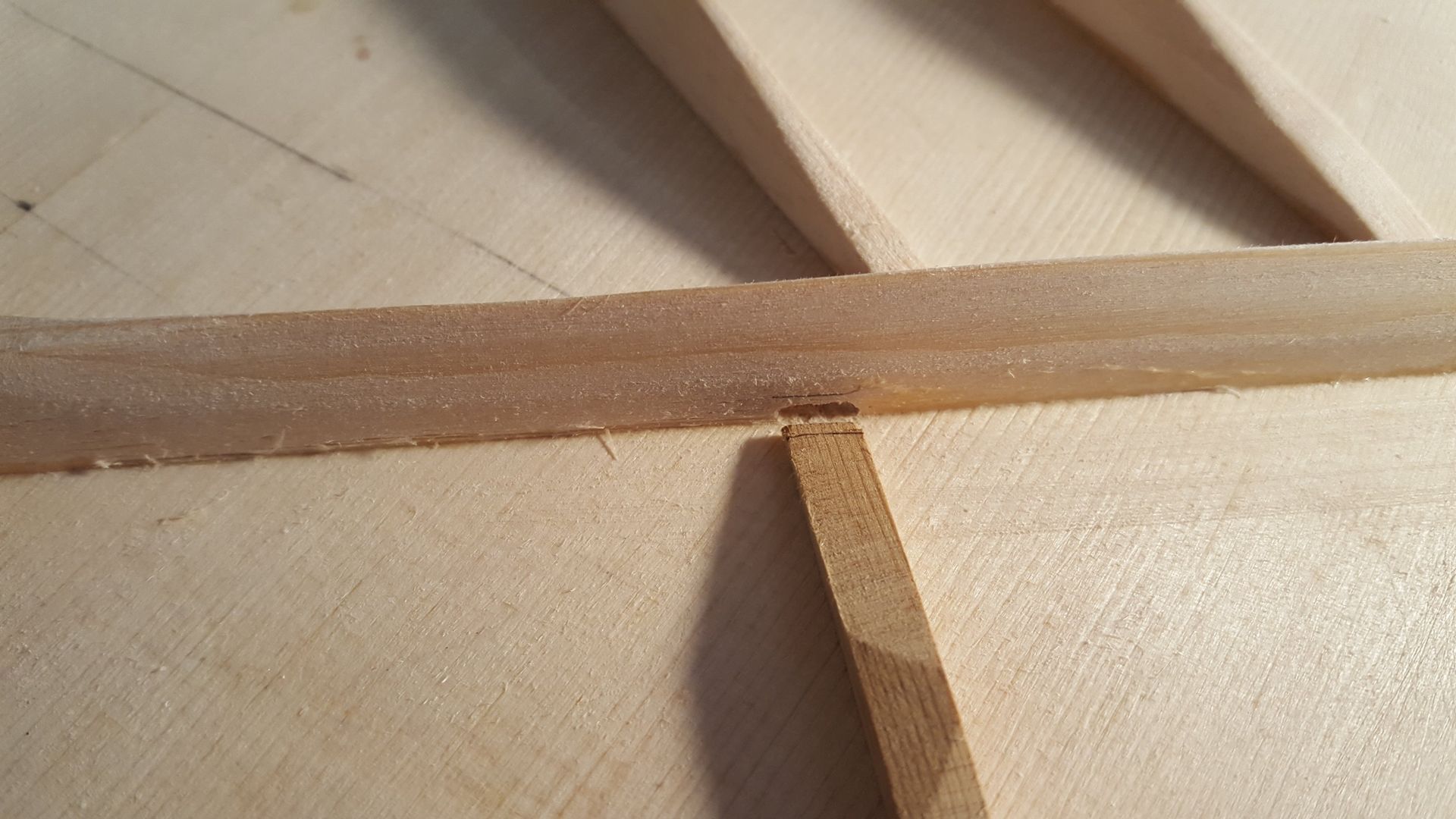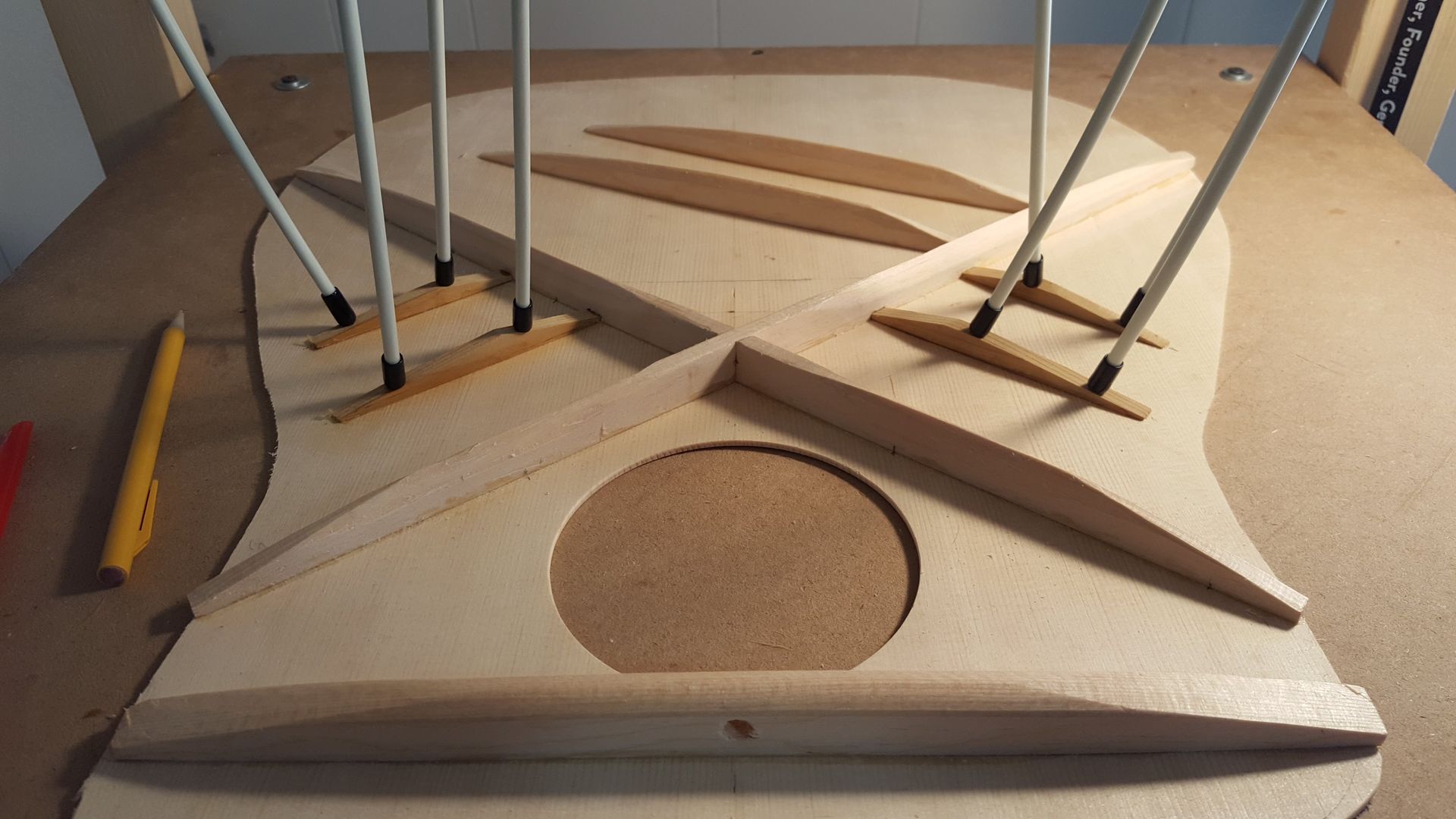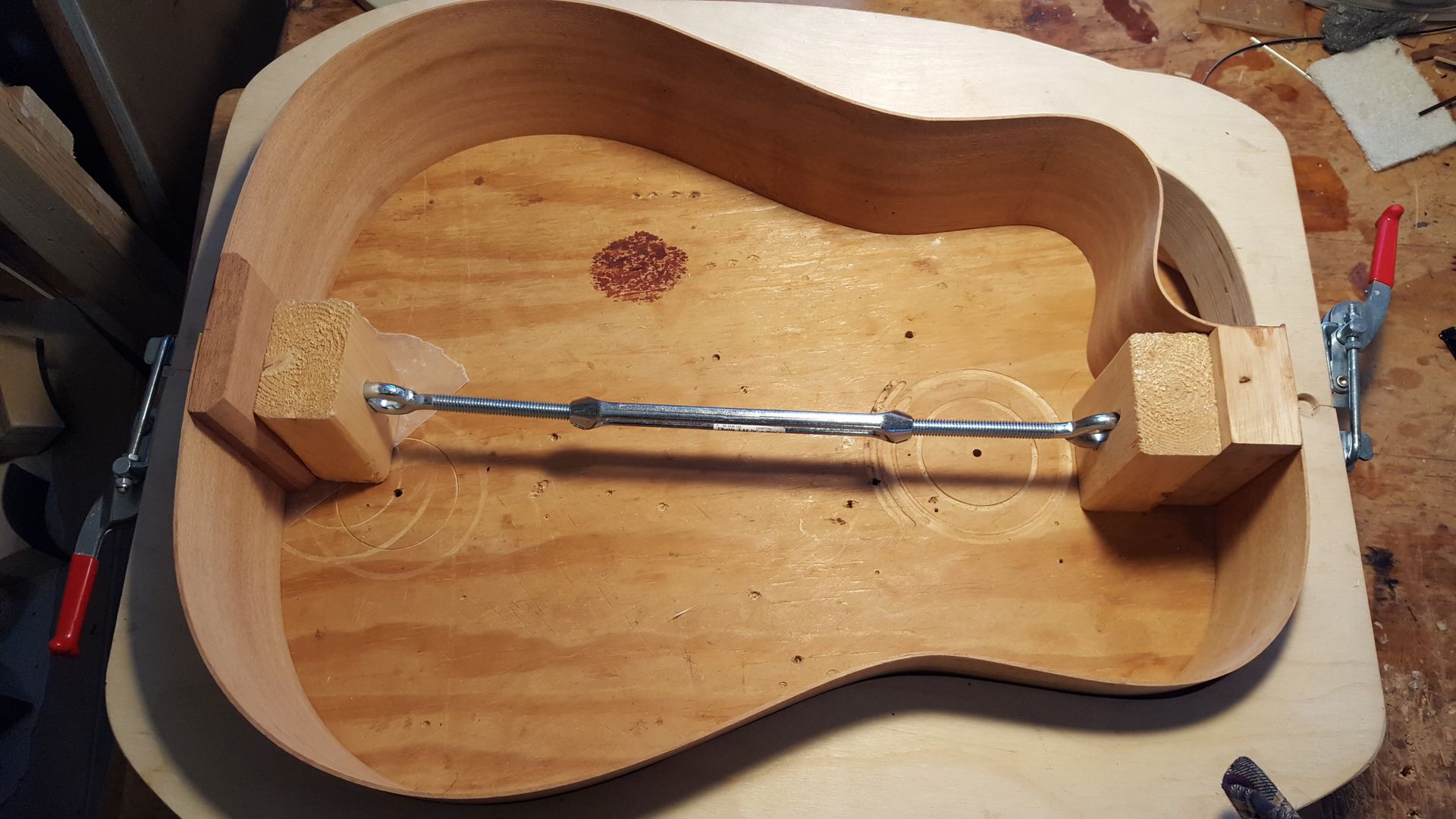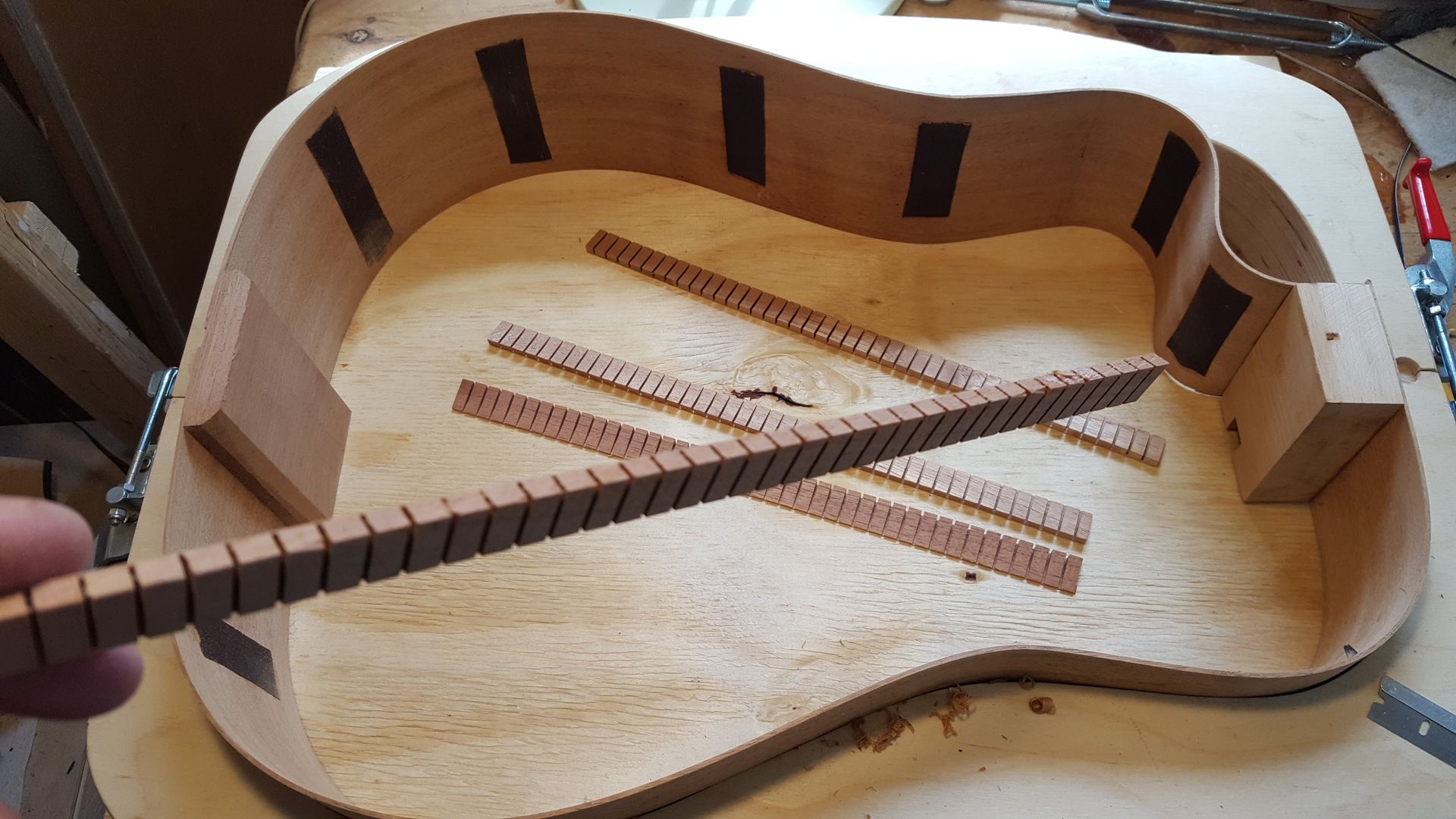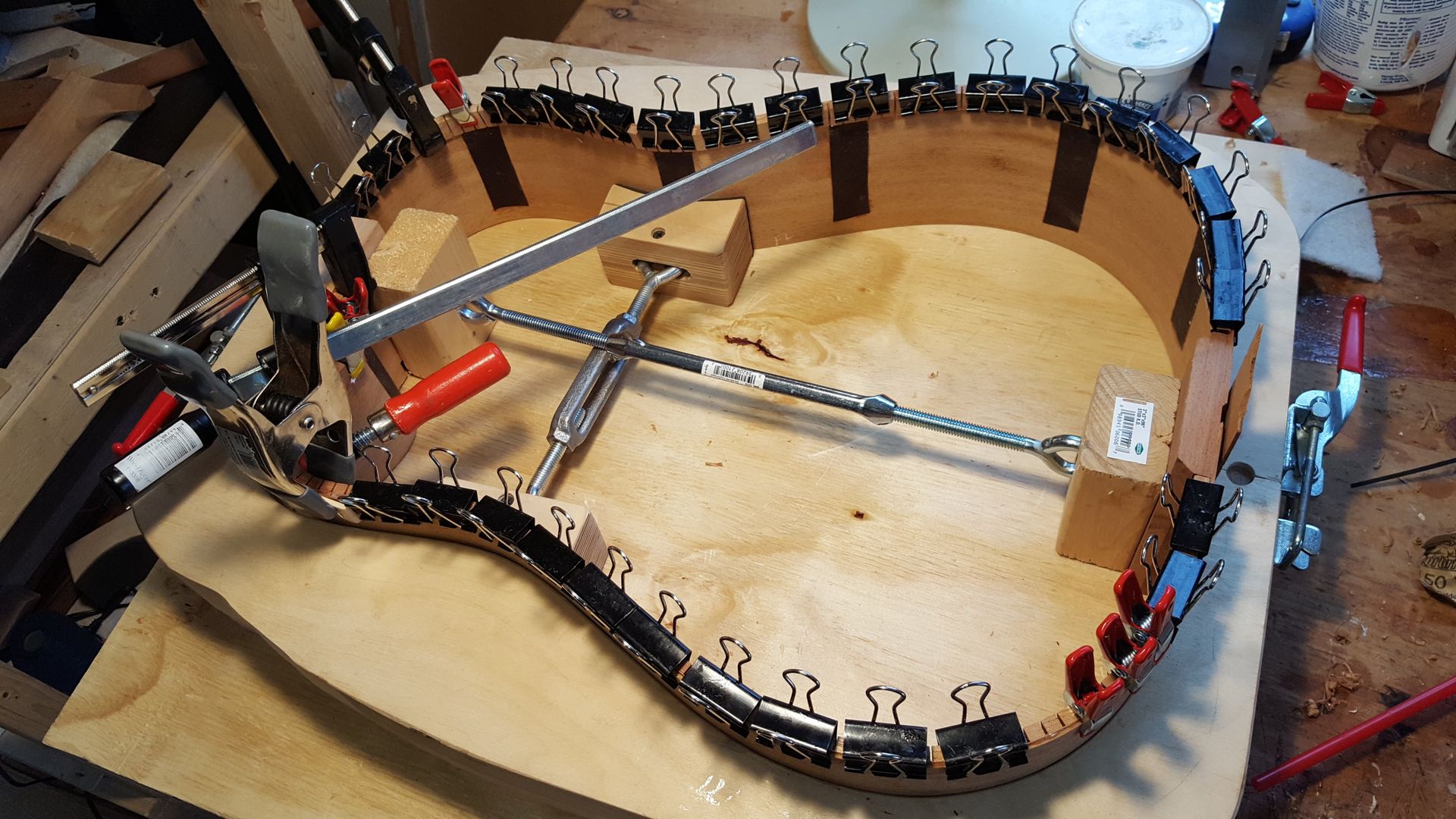D-18ish with Cutaway
May 15 2017
Closing up the box
I glued the back and top plates to the rim using fish glue.
Got it done just before the weather turned to summer. This will be the last body constructed until the weather breaks next fall.
I'll spend the summer finishing up a few guitars and one ukulele.
Next we'll get the end graft and binding installed.
May 1 2017
Sinker hog back
The original back had an area of figure that made it interesting to look at. Unfortunately figured wood is always risky to work with.
In this case the figured area chipped out while going thru the thickness planer. (see pic)
Luckily I had another set on hand. It's more plain looking but more stable in the long run.
I trimmed down a piece of ebony binding and installed for the back strip
Installed the center back strip, interior. Spruce.
Top bracing
I have all of the top bracing installed. Haven't put the bridge plate on yet,
I "tuck" all the tone bars into the X brace. The ends of the tone bars are notched into the X brace. This makes the bracing system one unit. Transfers vibration better, theoretically.
I forget when Martin stopped doing this but it was probably in the 40's. Not too many builders go to the trouble of doing this. I believe in it.
I use sound hole braces between the X braces and the big #1 brace. Martin uses just a thin piece of flat spruce to reinforce the sound hole.
I believe putting a little brace here instead can help prevent possible neck resets in the future. As this is the area that "caves in" under the pressure of the strings. It's worked so far.
I used hot hide glue on all the bracing. Which also transfers vibration better. The top sounds really good when tapped and I haven't fine tuned the bracing yet. I'm very happy with it.
"the rim"
Got the sides contoured and bent. Installed the mahogany blocks.
I used epoxy to attach the the cutaway side to the neck block. The sides of the neck block are "end grain" and usually not conducive to a good glue joint. So I used epoxy. Should be good for a few 1000 years.
Installed the cloth side strips. Used to prevent side cracks from travelling further down the side. Martin switched to wooden side braces in the 80's.
I use bias ply cloth tape from the fabric store. It's used for strengthening hems of dresses. Super strong and thin. Installed with fish glue.
The kerfing attaches to the sides of the "rim" to give more gluing area when you attach the back and the top of the guitar.
I buy this from Martin. It's Spanish cedar which is not a true cedar. It's from the Mahogany family but it smells like cedar. Thus the common name.
Gives the guitar that woodshop smell.
I had to glue one kerf at a time around the cutaway because of the sharp angle.

